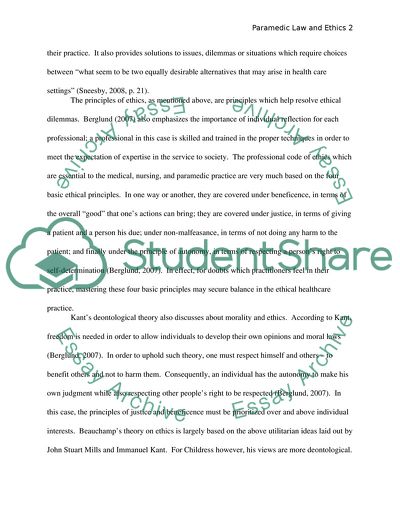Cite this document
(Paramedic Law and Ethics Literature review Example | Topics and Well Written Essays - 2000 words, n.d.)
Paramedic Law and Ethics Literature review Example | Topics and Well Written Essays - 2000 words. https://studentshare.org/health-sciences-medicine/1740708-paramedic-law-and-ethics
Paramedic Law and Ethics Literature review Example | Topics and Well Written Essays - 2000 words. https://studentshare.org/health-sciences-medicine/1740708-paramedic-law-and-ethics
(Paramedic Law and Ethics Literature Review Example | Topics and Well Written Essays - 2000 Words)
Paramedic Law and Ethics Literature Review Example | Topics and Well Written Essays - 2000 Words. https://studentshare.org/health-sciences-medicine/1740708-paramedic-law-and-ethics.
Paramedic Law and Ethics Literature Review Example | Topics and Well Written Essays - 2000 Words. https://studentshare.org/health-sciences-medicine/1740708-paramedic-law-and-ethics.
“Paramedic Law and Ethics Literature Review Example | Topics and Well Written Essays - 2000 Words”. https://studentshare.org/health-sciences-medicine/1740708-paramedic-law-and-ethics.


